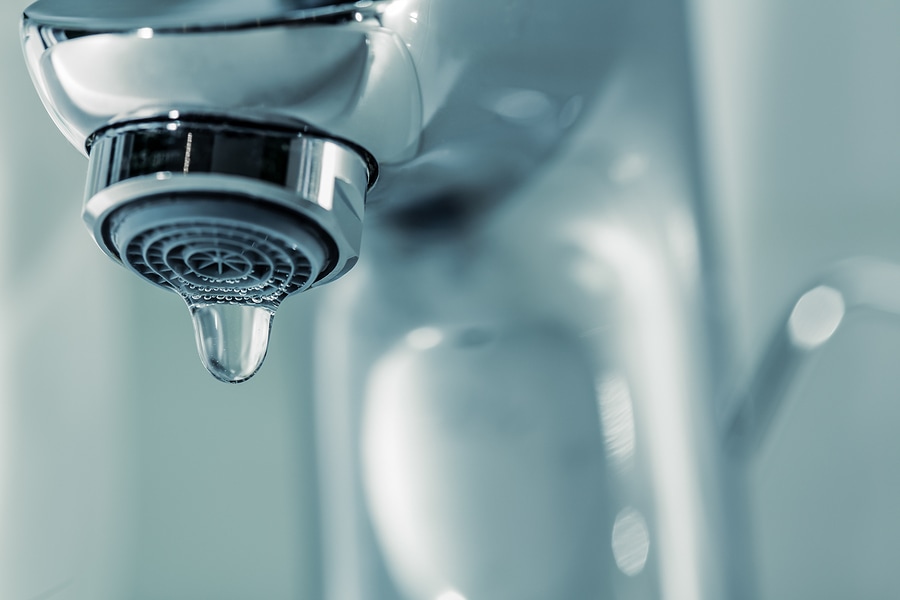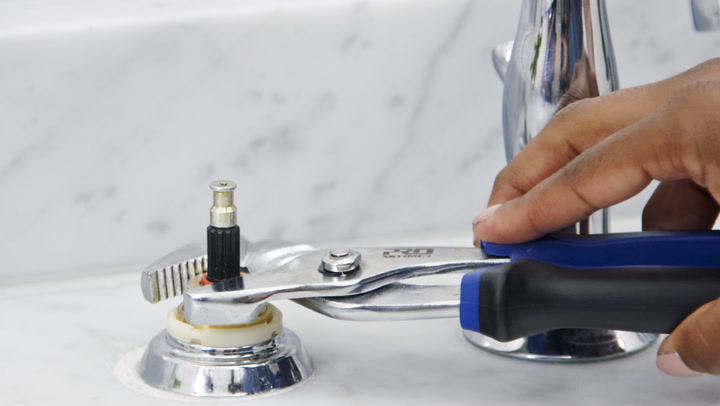This article underneath in relation to Leaky Faucets: Why They Happen & What to Do About Them is without a doubt interesting. Give it a try and make your own personal findings.

Dripping taps could seem like a minor hassle, but their impact goes beyond simply the nuisance of the noise. From drainage to incurring unnecessary monetary prices and health dangers, ignoring a leaking faucet can cause different effects. In this write-up, we'll look into why it's crucial to address this common household issue without delay and properly.
Waste of Water
Ecological Effect
Dripping taps add substantially to water wastage. According to the Epa (EPA), a solitary faucet trickling at one drip per second can throw away greater than 3,000 gallons of water per year. This not just stress water resources yet likewise influences environments and wildlife based on them.
Financial Costs
Increased Water Costs
Past the environmental effect, trickling faucets can blow up water expenses substantially. The collected wastefulness in time equates right into higher utility costs, which might have been stayed clear of with timely fixings.
Potential Residential Property Damages
Moreover, prolonged dripping can cause harm to components and surface areas bordering the tap. Water buildup can create discoloration, deterioration, and also architectural problems if left ignored, resulting in extra repair service expenses.
Health and wellness Concerns
Mold and Mildew Growth
The continuous presence of moisture from a trickling tap produces a suitable setting for mold and mildew and mold growth. These fungis not only endanger interior air quality yet also present health dangers, specifically for people with respiratory system conditions or allergies.
Waterborne Illness
Stationary water in dripping taps can end up being a breeding place for bacteria and other microorganisms, raising the risk of waterborne diseases. Impurities such as Legionella microorganisms thrive in stagnant water, potentially resulting in major illnesses when ingested or breathed in.
Do it yourself vs. Specialist Fixing
Pros and Cons of Do It Yourself Fixing
While some might attempt to repair a dripping faucet themselves, do it yourself repair services include their own collection of obstacles. Without correct expertise and devices, do it yourself efforts can worsen the problem or lead to insufficient fixings, extending the problem.
Advantages of Hiring a Specialist Plumber
Employing a professional plumber guarantees that the underlying cause of the leaking faucet is attended to effectively. Plumbing professionals have the competence and tools to identify and fix tap issues effectively, conserving time and decreasing the risk of more damage.
Step-by-Step Guide to Dealing With a Dripping Faucet
Tools Called for
Prior to attempting to deal with a leaking tap, collect the essential devices, consisting of an adjustable wrench, screwdrivers, replacement parts (such as washers or cartridges), and plumber's tape.
Typical Faucet Issues and Their Solutions
Identify the kind of faucet and the details issue creating the drip. Common troubles include damaged washing machines, corroded shutoff seats, or malfunctioning O-rings. Refer to maker instructions or on the internet tutorials for detailed advice on repair services.
Safety nets
Regular Upkeep Tips
To stop trickling faucets, carry out regular upkeep such as cleaning aerators, checking for leakages, and replacing damaged components promptly. Furthermore, take into consideration mounting water-saving devices or upgrading to much more effective fixtures.
Value of Prompt Fixes
Resolving dripping faucets as soon as they're observed avoids further water wastefulness and prospective damages, eventually conserving both water and money in the future.
Effect On Home Value
Assumption of Well-Maintained Residential Or Commercial Property
Keeping a building in good condition, including attending to upkeep problems like leaking faucets, improves its regarded worth and desirability amongst prospective buyers or tenants.
Impact on Resale Worth
Features with properly maintained plumbing components, consisting of taps, command higher resale values in the realty market. Resolving leaking taps can contribute to a positive impact during residential property inspections and arrangements.
Environmental Duty
Specific Contribution to Conservation
Taking responsibility for fixing trickling taps straightens with wider initiatives toward water conservation and ecological sustainability. Every individual's activities collectively make a considerable impact on protecting precious resources.
Lasting Living Practices
By prioritizing timely repair services and embracing water-saving habits, people add to lasting living methods that benefit both existing and future generations.
Verdict
Dealing with a leaking tap goes beyond plain comfort; it's a crucial action towards saving water, minimizing financial costs, and safeguarding wellness and property. Whether via do it yourself repair services or specialist support, taking action to deal with leaking taps is a little yet impactful way to promote accountable stewardship of resources and contribute to a much healthier, extra lasting future.
How to Fix a Dripping or Leaky Faucet
A leaking faucet is one of the most common problems that homeowners encounter, but it being commonplace doesn’t make it any less annoying. The constant drip drip drip of a leaking bathtub faucet, showerhead, or sink tap can disturb your home’s serenity. Left neglected, a dripping faucet can also result in higher water bills and discoloration or mold growth in your sink or plumbing fixtures.
Fortunately, you don’t have to be a trained plumber to know how to stop a dripping faucet. With some basic tools, replacement parts, and a little patience, leaky faucet repair is a breeze. In this article, we’ll explain what causes dripping faucets and how you can fix them.
What Causes a Leaking Faucet?
Kitchen and bathroom faucets come in all manner of designs, but most involve some combination of valves, O-rings, seals, and washers. The O-ring is usually the weakest link, but any one of these pieces can wear down over time. Heat, moisture, temperature fluctuations, minerals, mold, and movement can contribute to warping and corrosion, breaking the watertight seal. This just comes with the territory of being a homeowner. Everything is always subject to wear and tear, and some component parts of your appliances and fixtures need to be replaced on occasion. At least replacement O-rings are cheap!
More rarely, dripping faucets can be a symptom of excessively high water pressure. Were this the case in your home, you would probably notice that the leak is not isolated to one faucet. Water pressure issues are harder to resolve on your own. We recommend contacting a professional plumber if you suspect your water pressure is too high.
How to Fix a Dripping Faucet
Pipe wrench or monkey wrench Allen wrench set Screwdrivers Old towel or rag Shut off the water.
Before you do anything, you need to turn off the water to keep from drenching your kitchen or bathroom. You should find a valve under the sink and against the wall. Once you’ve turned this valve, try turning the faucet on to confirm that the water source has been cut off.
If you can’t locate your local valve for the faucet you’re working on, you can always shut off the water to the house at the main valve. Of course, this will prohibit anyone from using the sinks, showers, or toilets while you’re working on the faucet that’s giving you trouble.
Plug or block the drain.
You’ll be disassembling the faucet and removing some small bits of hardware. Plug the drain with a stopper or rag to avoid the possibility of a small screw falling into your P-trap.
Take apart the faucet assembly.
There are several varieties of kitchen and bathroom faucets, each with its own manner of assembly. For detailed instructions on how to disassemble your faucet, you can refer to the fixture’s manual or contact the manufacturer. If you know whether you have a ball, disc, cartridge, or compression faucet, you can find detailed schematics online.
In general, you need to begin by removing the faucet handles. You might notice a small screw that you’ll need to remove with a screwdriver or Allen wrench. If you don’t see any visible securing hardware, it’s likely hidden under a decorative cap that can be unscrewed or popped off with flathead screwdriver.
Remove each piece methodically, consulting a schematic when necessary. Take notes or arrange the pieces in such a way to make it easier to correctly reassemble the faucet later.
Remove the cartridge.
Once you’ve removed the handles and securing hardware, you should be able to remove the valve cartridge or stem. Some cartridges will slide right out. Other faucet models will require you to loosen a nut with a pipe wrench before you can remove the valve stem.
Examine the exposed hardware.
With the cartridge or stem removed, inspect the component parts. Check the rubber O-rings for wear and tear. Also examine the seat washer for corrosion or other damage. These pieces are usually the responsible parties for a dripping faucet, but it’s worth inspecting the other component parts while you have the faucet disassembled.
Find replacement parts.
Once you’ve identified which faucet component has failed, find an identical replacement. Your local hardware store should have O-rings, seat washers, and other standard components in stock. If you have a luxury or uncommon faucet, you may have to contact the manufacturer for a replacement part.
It’s a good idea to take your old parts with you to the hardware store so you can compare them with the store’s inventory and be sure you’re purchasing the correct replacement.
Reassemble the faucet.
With your new parts in hand, reconstruct the faucet and handles. Don’t be tempted to overtighten screws or nuts. You might think this could create a better seal, but it can instead damage or bend a delicate part of the assembly and create a new problem for you.
Turn on the water and test the faucet.
The only thing left to do is test your work. Unplug the sink, turn the water back on, and try the faucet. Congratulate yourself on a job well done!
https://www.libertyhomeguard.com/how-to-fix-a-dripping-or-leaky-faucet/

I discovered that write up on while doing a search on the internet. Sharing is caring. Helping people is fun. Thanks a bunch for your time. Please check our site back soon.